#paddy cultivation machine
Link
1 note
·
View note
Text
rice harvesting with junior high school students
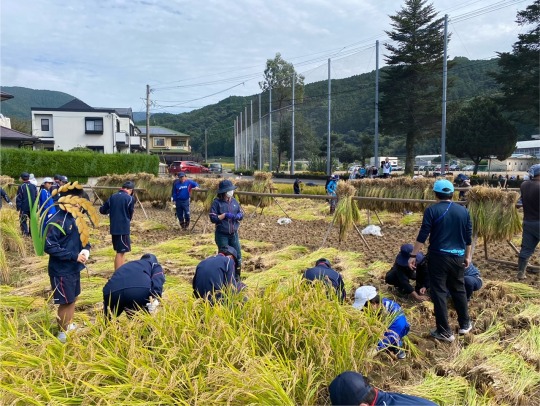
The smallest junior high school in my town (which I'm not assigned to) has a small rice paddy at the front of their school, and the students plant and harvest the rice each year as a school tradition. The ALT at that school was kind enough to ask if some of the other city ALTs could join in for the event since it's a good oppotunity for cultural exchange between the ALTs and students, and the school staff thankfully agreed. So on a Friday afternoon in October, I joined the junior high school students in harvesting rice.
First, let's talk a little about rice and its significance in Japanese history and culture. Rice has been the most important staple food throughout all of Japanese history, cultivated for about 2000 years, and is included in almost every (traditional) meal. Rice was so important that in early Japanese history, it was used as currency, and the word gohan, literally meaning rice, is also used generally to just mean "meal." Rice is also used to make many traditional foods and drinks you may have heard of like sake, mochi, rice crackers, rice balls, sushi, and dango (source.)
However, in recent years Japan's consumption of rice has generally decreased with the influence of western foods on the Japanese diet. Rice reached its peak of consumption in 1962, in which the average Japanese person consumed 118 kg of rice a year, or five bowls a day. But in 2020, it was reported that consumption had more than halved to just under 51 kg a year. As the influence of cheaper and newer food options rose, in 2011 Japan saw the sales of more bread than rice for the first time (source.) Indeed, most of my students seem to have a generally split diet. Many Japanese people eat bread in the morning for breakfast, rice with lunch, and a wide variety of things for dinner like rice or pasta dishes.
But despite rice not being quite the staple that it used to be, it is still beloved by Japanese people, who consider it to be a national and cultural symbol. Almost anywhere you go in Japan, you can find large stretches of rice fields, which are to Japanese people a classic and nostalgic bit of scenery representing Japan.
Now, let's talk about rice cultivation. Rice is typically planted in the early summer in flooded paddies, gradually maturing into a green and gold plant which is usually harvested in the fall. However, in warmer climates of the south, they can sometimes get a quicker harvest and instead plant in two batches each year (source.)
On this particular early fall day, we donned boots and thick gardening gloves to step onto the still somewhat marshy rice paddy. The rice paddy was quite small compared to most larger-scale farms, but it seemed to me like it was used to create a meaningful and educational experience for the students rather than to actually grow a product for the market.

To harvest the rice, we had to use a kama, a small sickle, which looks something like this:
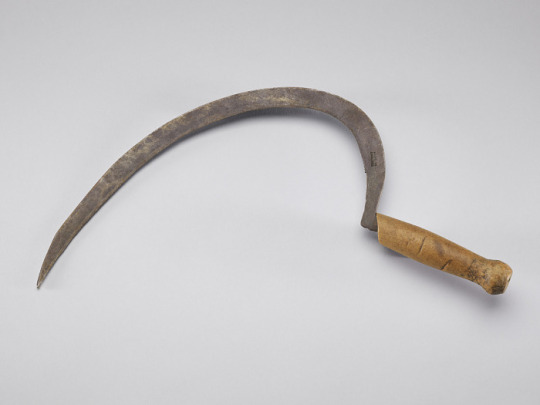
We were told to grab two or three handfuls of rice stalks and cut through them in one sweep with the sickle. Stalk clumps were then tied together in larger bundles with string and hung over a wooden stand to dry out.


We only did this much of the harvesting process at the school that day, but according to this helpful website, following the drying process, the rice would then be threshed either by machine or by hand. Then it is either dried again or milled before being sold and consumed. In modern times, this process has become much easier through the use of machines, but in Japan as early as even half a century ago, most of the harvesting was done by hand. If you are a visitor in Japan, it's very common to see little old ladies and men with permanently bent backs hobbling down streets, as a result of their many years of hard work bent over in the rice fields.
The rice harvesting was pretty hard work. We worked for only an hour or two, but it was very tiring to be bent over and it took a bit of force to cut through the rice clumps with the sickle.
Some of the plants had large pink growths on them, a pest which can devastate rice fields if it spreads, as I was told by a student. I searched for an image of it online, and found that the pink growths are actually snail eggs, which feast on the rice plants after hatching. It looks something like this:
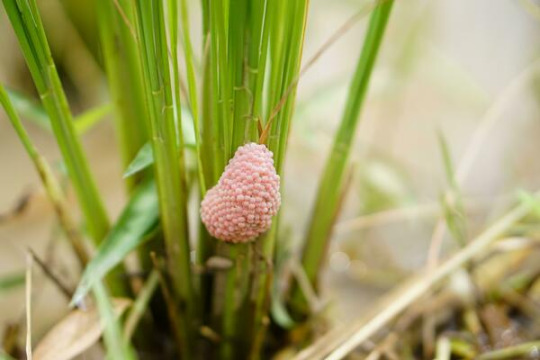
There were also many critters like frogs and spiders living among the stalks of rice. Some of the students and I started catching the tiny frogs together and offering them to each other as "presents," which was pretty funny. It reminded me of the fun I had as a kid catching frogs.
The junior high schoolers were a little shy, but very nice. A pair of siblings were half-Japanese and half-American, so they were excited to see some people that looked like them that they could connect with. We ALTs had fun chatting and joking with them while collecting the bundles of rice. We tried to get them to practice English with us, and they tried to teach us about rice harvesting, so it was a nice moment of exchange for the both of us.
After we were finished, everyone took a big group photo together (which I sadly didn't receive a copy of) and had a formal ending ceremony in classic Japanese fashion. I never thought I'd be putting so much of my desk time (yep, I write these on the clock when I don't have classes) into researching about rice, but here we are. This blog has been a fun opportunity to not only share my experiences, but to research and learn about many different and new things. Anyway, I hope you enjoyed! As always, thanks for reading.
0 notes
Text
Milltec Paddy Cleaner: Shine Your Rice Brighter With Slide Gate Pneumatic Technology
Rice is the most eaten food in the world. So it needs extra care. But fertile seeds and sunshine are not enough to get perfect grains. Meet Milltec Paddy Cleaner which is a game changer in the rice processing industry.
These giant and strong steel machines are powered by Slide Gate Pneumatic Technology that takes paddy cleaning to a whole new level.
Process Of Cleaning Paddy With Slide Gate Pneumatic Technology
Removing impurities precisely: It is a well-known fact that paddy when comes fresh from harvest brings stones, sand, dust, and even immature grains. The Milltec Paddy Cleaner uses a series of strainer and air aspiration to clean these grains from impurities. Here the real hero is Slide Gate Pneumatic system. This system makes the gentle air that carries away the light chaff and dust making the heavier paddy fall away. The precise air made by the system makes the maximum cleaning without the precious grain damage.

More benefit and efficiency: The last motto of a farmer of harvesting is money and food to eat. Or you can say, time is money. This term is clearly understandable by the Milltec Paddy Cleaner. It comes with effective designs while the Slide Gate Pneumatic Technology helps process large quantities of paddy quickly and efficiently. This results in higher output, reduced labor costs, and greater profits for you.
Handle With Care: The motto of Milltec Paddy Cleaner is “handle with care and clean with power”. It makes sure that your paddy is unharmed throughout the cleaning process with the help of its specially designed strains and gentle airflow. It doesn’t allow any cracked or broken grains and ensures a healthy paddy for the milling.
Long-Lasting Paddy: These giant machines are not manufactured for a short time but are long-lasting. They are robust-free. Their construction is sturdy and their components are of high quality making it reliable for long-term use.
Perfect Choice: The Milltec Paddy Cleaner has a perfect design for you whether you are a small farmer or a large-scale producer. It has a wide range of capacities and configurations giving you the option to select a perfect fit for your farm ensuring a high shine of your rice cultivation.
So, stop cleaning with the traditional methods and shine your future of rice processing with Milltec Paddy Cleaner. The Slide Gate Pneumatic Technology, combined with efficiency, gentleness, and durability, ensures it is the perfect choice for high-quality paddy and a thriving rice business.
Contact Us:
Photons Food
Visit Us: https://photonsfood.com
Call: +91-8610167937, +65-91684326
Email: [email protected]
Address: East Godavari District, Andhra Pradesh, India
0 notes
Text
Basmati Rice Manufacture | Top 5 Basmati Rice Manufactures in India
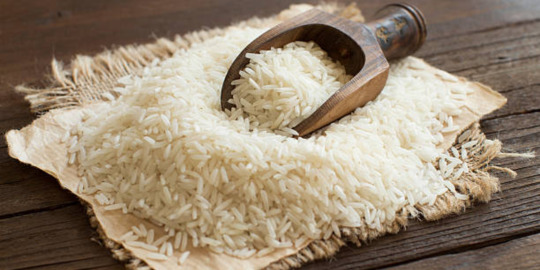
Basmati Rice Manufacture" refers to the entire process of producing Basmati rice, from the initial stages of cultivation in the fields to the final stages of processing and packaging for sale. This process is distinct due to the unique characteristics of Basmati rice, known for its long, slender grains, distinct aroma, and particular taste. Here's an overview of the key stages involved in the manufacture of Basmati rice:
1. Cultivation
Location: Basmati rice is traditionally grown in specific regions of India and Pakistan, with each region imparting unique characteristics to the rice.
Climate and Soil: The unique climate and soil conditions of these regions are essential for the distinct qualities of Basmati rice.
Farming Practices: Careful selection of seed varieties, water management, and other farming practices play a critical role in the cultivation of Basmati rice.
2. Harvesting
Timing: Harvesting at the right time is crucial to ensure optimal grain maturity and moisture content.
Method: Harvesting is often done manually to preserve the integrity of the grains, although mechanical harvesting is also used with care.
3. Drying
Sun Drying: The harvested paddy is dried under the sun to reduce moisture content to a level suitable for storage and milling.
Controlled Drying: The process must be carefully managed to prevent cracking or spoilage of the grains.
4. Aging
Storage: Basmati rice is often stored for several months to years. This aging process enhances its flavor, aroma, and cooking properties.
Environment: The storage environment must be controlled to prevent spoilage and maintain quality.
5. Milling
Hulling: Removing the outer husk from the paddy grains.
Whitening: The bran layer is milled away to produce white rice. This step must be gentle to maintain the grain's integrity.
6. Polishing (Optional)
Appearance: Polishing enhances the visual appeal of the rice by giving it a shiny appearance.
7. Grading and Sorting
Quality Control: The rice is sorted and graded based on length, uniformity, and the absence of broken grains.
Technology: Advanced machines are often used for efficient and accurate sorting.
8. Packaging
Protection: Packaging is designed to protect the rice from moisture, pests, and other environmental factors.
Variety: The rice is packaged in various sizes, from small retail packs to large bulk containers.
9. Quality Control
Standards: Throughout the process, quality checks are performed to ensure the rice meets the high standards expected of Basmati rice.
Parameters: These checks include assessments of aroma, length, cooking quality, and taste.
10. Distribution
Market Reach: Basmati rice is distributed globally, adhering to the specific demands and regulations of different markets.
Additional Considerations
Sustainability: The cultivation and processing of Basmati rice are increasingly focused on sustainable practices, addressing concerns like water usage, pest control, and environmental impact.
Geographical Indication (GI): Basmati rice has a GI tag, which means it is region-specific, and its unique characteristics are attributed to its geographical origin.
The manufacture of Basmati rice is a complex process that combines traditional practices with modern technology, ensuring that the unique qualities of Basmati rice are preserved from the field to the consumer's plate.
Top 5 Basmati Rice Manufactures in India
When discussing the top manufacturers of Basmati rice, it's important to recognize that India and Pakistan are the primary countries where Basmati rice is grown and produced, due to the specific geographical and climatic conditions required for its cultivation. The leading manufacturers are typically large companies that have established a significant presence in the global market. Here are five prominent manufacturers of Basmati rice, primarily based in India and Pakistan:
Shri Lal Mahal Group (Vi Exports)
Shri Lal Mahal Group is another prominent player in the Basmati rice industry, particularly in the Indian market. Established in 1907, the company has a long-standing history and has grown to become one of the leading exporters and manufacturers of Basmati rice. Here are some key aspects of Shri Lal Mahal Group:
KRBL Limited (India)
Background: KRBL is one of the oldest and most reputable Basmati rice manufacturers in India, with a history dating back over a century.
Brands: Known for its flagship brand, 'India Gate,' KRBL has a significant global presence.
LT Foods (India)
Brands: LT Foods is known for its popular 'Daawat' brand of Basmati rice.
Global Reach: They have a substantial international market, exporting to numerous countries worldwide.
Amar Singh Chawal Wala (India)
Legacy: With a long history in the Basmati rice industry, Amar Singh Chawal Wala is recognized for its high-quality products.
Brands: Their flagship brand, 'Lal Qilla,' is well-known in both domestic and international markets.
Matco Foods (Pakistan)
Reputation: Matco Foods is one of the leading Basmati rice exporters from Pakistan.
Sustainability: The company is also known for its focus on sustainable and environmentally friendly practices.
Additional Notes
Market Dynamics: The Basmati rice market is dynamic, with companies competing on quality, branding, and distribution networks.
Export Markets: The Middle East, Europe, and the United States are significant markets for Basmati rice exports from India and Pakistan.
Quality and Certification: These manufacturers often have certifications and follow strict quality control measures to maintain the high standards expected of Basmati rice.
It's important to note that the landscape of top manufacturers can change, influenced by factors such as market trends, agricultural conditions, and international trade policies.
0 notes
Text
Chaff Cutter Manufacturers in Andhra Pradesh
Chaff Cutter Manufacturers In Andhra Pradesh play a crucial role in bolstering the state's vibrant agricultural sector. With agriculture being a primary occupation for a substantial portion of the population, these manufacturers contribute significantly by producing chaff cutters that streamline fodder processing, particularly important in a state with a significant livestock presence.
Chaff cutter manufacturers in Andhra Pradesh are attuned to the specific agricultural requirements of the region. Given the diverse crops cultivated, ranging from paddy and sugarcane to pulses and millets, manufacturers design chaff cutters with versatility in mind. These machines are adept at processing a variety of forage materials, ensuring that farmers can effectively manage their livestock feed with efficiency.
0 notes
Text
0 notes
Text
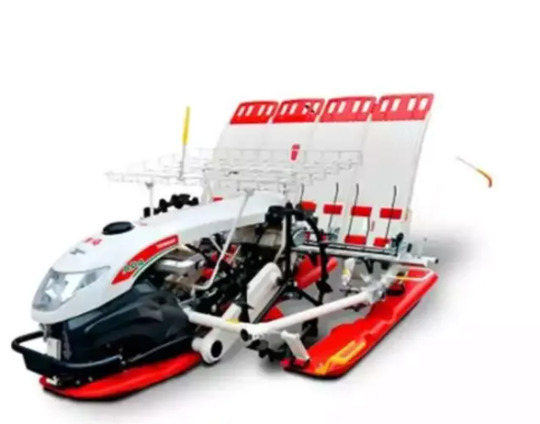
Rice Transplanter in India | Tractor Junction
A Rice Transplanter is a specialized agricultural machine designed to streamline and automate the process of transplanting paddy seedlings into rice fields. It plays an important role in modern rice cultivation, significantly reducing the labor and time required for transplanting rice. You can use the Tractor Junction app or website to buy this Rice Transplanter.
0 notes
Text

Unmanned smart farm now a reality at Xinbang cooperative
Fifth-generation mobile networks are making unmanned smart farm a reality at Tushibao Cooperative in Xinbang Town of Songjiang District.
A drone works on the smart farm of Tushibao cooperative under the control of a central platform.
Fifth-generation mobile networks are making unmanned smart farm a reality at Tushibao Cooperative in Xinbang Town of Songjiang District.
Several drones and unmanned machines tend to an empty rice paddy in an orderly manner at the cooperative.
The secret of this farm lies in a joint force of multiple technologies, including high-efficiency cloud platform, agricultural data surveying and modeling, and farm facility digitalization, powered by Shanghai Mobile and BeiDou navigation satellite system.
"Rural areas in the south of the Huangpu River in Songjiang are facing an increasingly aging population. In addition, they are in urgent need of improving its fine management farming skills. Shanghai Mobile therefore joined hands with the Songjiang Agriculture Commission and Tushibao Cooperative to create a pilot 5G smart farm," said Zhu Chunhui, deputy manager of Shanghai Mobile's Songjiang branch.

A high-quality 5G agricultural exclusive network was built at Tushibao Cooperative. Relying on BeiDou 5G high-precision positioning system, space data about the farm was collected to help create a digital model for drones and unmanned machines to rely on.
"Since the launch of the project, the efficiency of the cooperative has improved significantly. Power cost of fertilizer spreading has been saved by 20 percent. The labor shortage has also been greatly solved," said He Yangyang, chief of Tushibao Cooperative.
The smart farm transformation project was started four years ago, when He launched his entrepreneurship in the suburban district. While starting to use drones to protect plants, he actively sought cooperation with Shanghai Mobile.
"In the next step, Shanghai Mobile will keep on cultivating its 'digital central platform' to manage farmers, farmlands and agricultural machines," said Zhu with Shanghai Mobile's Songjiang branch.
0 notes
Text
Top 3 Rice Transplanters Ideal for Efficient Paddy Farming
Farming implements like seeding machines, subsoilers, cultivators, etc., have made farming much more efficient and fast. Another great device that has made paddy farming much more precise and cost-effective is the rice transplanter.
These implements use less labour and ensure precise and on-time planting. Moreover, they ensure uniform spacing and plant density. Wondering which brand’s rice transplanters to buy? Here are your 3 options.
Mahindra Rice Transplanter MP-46
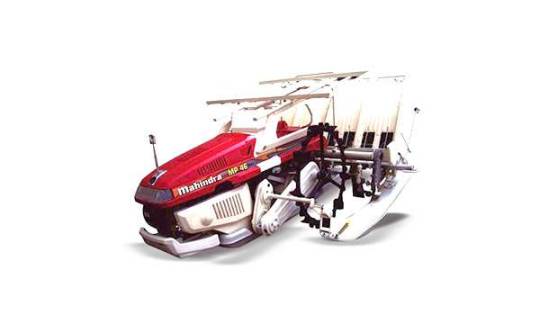
This 5 hp rice planter by Mahindra is suitable for paddy farming and is reasonably priced at Rs. 1.9 Lakh* in India. This model helps with effective transplanting as it has an automatic float adjustment mechanism for uniform depths for high yield, fast speed of operation, and rubber-long life-lugged wheels for better traction while transplanting. In addition, its 660 mm wheels offer great 5-step planting depth.
Mahindra Walk Behind Rice Transplanter MP461

This 5 hp rice transplanter is suitable for paddy farming that reduces manual labour for rice transplanting. Moreover, the price of this rice planter is Rs 2.8 Lakh* in India. Its transplanting speed of 0.4-0.85 is efficient enough for any field type. This model weighs 180 kg and is thus easy to port everywhere on the field.
Moreover, its rubber lug wheel tyres are strong and have a flexible rubber casing that provides great traction and resistance while working on the field.
VST Paddy Transplanter

This 8-row, 3.94 hp, paddy transplanter is a powerful farming implement suitable for variant paddy farming. The price of this implement is Rs 2.15 Lakh* in India. This 305 Kg implement’s engine-rated power of 2.94 KW and speed of 2600 rpm is highly efficient, providing great speed while working.
Moreover, farmers can enjoy a fast and agile transplanting speed of 0.44-0.54 mt/sec with great precision and accuracy.
To know more about these rice planters in detail, visit Tractor Junction.
0 notes
Link
Book Now: https://www.krishitool.in/product_list/AGRICULTURE_GARDEN/Transplanter/Rice_Transplanter

#rice planter#Manual Rice Planter#rice transplanter#mini rice transplanter#Rice transplanter online#rice planting machine#small rice planting machine#paddy transplanter#paddy transplanter machine#paddy planter#paddy planting machine#rice transplanter machine#manual rice transplanter#kubota rice transplanter#paddy transplanter machine price#rice planting machine price#4 row rice transplanter price#mahindra rice transplanter#4 row manual rice transplanter#manual rice planting machine#paddy sowing machine#paddy planting machine price#rice plantation machine#nadavu machine#rice sowing machine#rice seeding machine#transplanter machine price#kubota paddy transplanter price#manual paddy transplanter#paddy cultivation machine
1 note
·
View note
Text
Is Rice Considered a Vegetable? Complete Guide

Is Rice Considered a Vegetable? Rice is the world's third most consumed grain. From India and China to Spain and the United States, it is a staple dish heavy in starchy carbohydrates. It is the main component in paella, risotto, jambalaya, and kedgeree, as well as a famous curry side item and a key ingredient in Japanese sushi.
Nowadays, buying rice at the store may be a mind-boggling experience. There are numerous varieties of rice available, each with its own unique form, size, texture, and flavor. Long grain, short grain, basmati, jasmine, Arborio, and brown are some of the varieties available in supermarkets. However, there are wild, crimson, and even black rice kinds.

Is Rice Considered a Vegetable
Rice is used in a variety of cuisines all over the world, many of which have grown popular in our own country and are household favorites. Is Rice Considered a Vegetable Rice is a satisfying staple food with a high carbohydrate content and either soluble or insoluble fiber, depending on the variety.
But is rice considered a vegetable? Rice is classified as a grain rather than a vegetable. Grain foods are those that are the edible seeds of grasses and typically come in a casing known as a "husk."
What Plant Produces Rice?
All of the rice varieties we consume are derived from various types of grass. The grains of rice are actually the grass seeds. The husk is an outer shell that surrounds the grain of rice. The husks are found at the top of the grass stalks and are harvested when they are ready, which takes between 105 and 150 days depending on the cultivar.
Is grass considered a vegetable?
Grass could be called a vegetable because the definition of a vegetable is any plant that is edible. After all, cattle and other animals consume it, don't they? Is Rice Considered a Vegetable But that would also imply that fruit is a vegetable, which would be extremely perplexing! As a result, a significantly more exact definition of a vegetable is "any plant consumed for food that is neither a fruit or seed." Because rice is essentially the seed of a grass, it has its own definition of a grain.
What exactly is a grain?
A grain is the edible component of a grass plant, which is actually its seed. Many of these grains, such as wheat, oats, buckwheat, barley, and millet, are also known as cereal grains. Because they contain a lot of sweet starch, they are commonly referred to as starchy carbs.
https://www.youtube.com/watch?v=JqP4wSWsYr4
Many grains, including rice, can be processed into flour. These various flours are subsequently transformed into bread, tortillas, biscuits, cakes, and chapattis. Is Rice Considered a Vegetable Depending on the meteorological conditions during crop growth, this makes grain an incredibly valuable and frequently inexpensive food supply.
How Is Rice Produced?
Rice is planted in either water-drenched paddy fields or on plowed dry land that is later irrigated. Rice is a water-intensive crop that cannot endure drought conditions.
As a result, many producers in Asia and South East Asia take use of monsoon rains and flood fields to cultivate their rice crops. The plant is then propagated and transplanted into the flooded fields, either by hand or machine.
If the land is in a drought-prone area, it must be thoroughly prepared and leveled to allow seedlings to grow more quickly and to promote better crop management. Is Rice Considered a Vegetable As a result, crop yields increase and rice quality improves. Other techniques include planting an aerobic rice variety in raised beds with mulch. This aerobic rice is tolerant in arid circumstances.
How Do Rice and Vegetables Compare?
Rice is regarded as a staple food. This signifies that it is a food type that accounts for the majority of a population's diet. Although rice is high in carbohydrates, it lacks several nutrients, whereas vegetables do. Rice is high in magnesium, phosphorus, manganese, selenium, and iron, as well as the B vitamins folic acid, thiamine, and niacin.
Brown rice retains the husk and hence contains slightly more nutrients, but it also contains a higher quantity of insoluble fiber, making it excellent for the intestines. White rice, on the other hand, has no husk and is largely composed of soluble fiber, which gives it its starchy component. Is Rice Considered a Vegetable This means it digests much faster and can cause blood sugar spikes as a result.
Vegetables, on the other hand, have a far more complete spectrum of vitamins and minerals. Kale, for example, is one of the most nutrient-dense vegetables available. This is due to the fact that the nutrients are found in the leaves rather than the seeds. This is why it is usually preferable to eat more vegetables than grains with a meal.
Is it Safe to Eat Raw Rice?
Raw rice should not be consumed by humans. It can cause food poisoning due to the bacterium Bacillus cereus. Bacillus cereus sickens around 60,000 people in the United States each year. This nasty little bacterium produces spores that can withstand boiling temperatures. So it is critical to consume rice as soon as it is cooked, and once cooled, it should be refrigerated and used within 48 hours.
Furthermore, eating raw rice might cause digestive problems since the body is unable to deal with the protein, lectin, which it finds tough to digest. Is Rice Considered a Vegetable Because they might impair your body's ability to absorb essential nutrients, lectins are frequently referred to as anti-nutrients.
Plant lectins are commonly found in grains, and their primary function is to protect the plant from pests. This risk can be reduced by washing the rice before cooking. To be safe, always remember to cook and store cooked rice carefully.
Related Articles:-
- Can Italian Sausage Be a Little Pink?
- Can Meatballs Be a Little Pink?
- This is what’s on the Dunkin’s fall menu this year and will be available next week
- Can You Freeze Cannolis? How to Freeze Properly?
- Does Canned Soup Go Bad? How to Check & Know?
- Can You Freeze Stuffed Peppers? How to Freeze Properly?
Read the full article
0 notes
Text
Find the Best Rice Mill Dryer Plant
Rice is a paddy crop and is cultivated in paddy-flooded fields. As rice is grown on lowland which is well watered, they absorb a lot of water and are not good for storage purposes. Hence, a rice mill dryer plant is set up to dry the paddy crops which are usually soaked in moisture. The rice dryer plant helps in reducing the moisture from the crop grain. The moisture-free grains of rice are more eligible for storage purposes and can be used for several years. Therice dryer machine is built with technologies that ensure the gentle processing of grains. This reduces the damage of grains and also cuts on wastage parts. The rice dryer plant is based on technology that circulates air and recovers all the heat generated through it. This helps in energy saving as well.
for more info: https://jyotigroup.net/
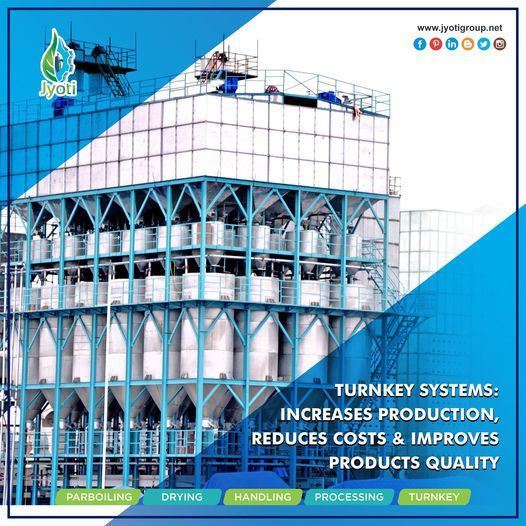
0 notes
Text
Rice Mill: How to Make a Rice Mill Plant
Rice milling is the process of removing the outer husk of rice grains to reveal the white, powdery endosperm inside, which can then be milled into white rice or further processed into brown rice, flour, or other by-products. Learn how to make a Rice Mill Plant below!
What is a Rice Mill
When you need processed rice on your table, you can make it at home by installing one of many rice mill plant models. Rice mills use a process called husking and polishing. To break down long grain white rice into usable grains. Then each rice kernel is polished until every bit of outer coating has been removed, making it suitable for consumption. These steps occur with vibrating machines that are easy for even young children to operate.
Which machines uses in rice mill?
The process of separating rice from its husk has been applied since ancient times. The earliest evidence comes from sites in Japan dated to around 7000 BC. In 1697, Edward and his colleagues collected over 50 samples of hulled and un hulled rice from 800 Japanese villages for analysis; these were sent back to Britain for further testing. He found that most regions grew both types, but with far more brown than white varieties. By 1894, 70% of all arable land in Japan was planted with paddy fields and nearly 80% of her total area was under crop cultivation. Rice Mills are generally located close to where rice is grown. There are two main types of mills: stone-grinding mills, which are powered by waterwheels or electricity; and hammermills, which are driven by steam engines or diesel engines. Hammermills use steel hammers to break up hard grains into smaller pieces while stone-grinding mills use grinding stones such as basalt (lava rock) or granite as grindstones. Today there is only one traditional stone-grinding mill left in operation in Japan City on Shikoku Island.[1] Mills using modern methods usually have steel rollers instead of grindstones.
Advantage of rice mill
The main advantage of Rice Mill over paddy is savings in fuel. Average savings in fuel is 20-25%. At one time there were two reasons why farmers did not go for mechanized rice mills. First was lack of money and second, they were attached to their traditional method. However, now almost all states have adopted mechanization of rice mills. In most of these states, subsidy has been given by Government to encourage farmers to adopt modern methods. With increase in production due to adoption of new technology and increase in demand due to growth in population, rice prices are increasing day by day which is beneficial for producers as well as consumers. Mechanization has also increased employment opportunities.
The Process of rice mill plant
The rice is harvested at different stages of maturity. If harvested too early, rice has a higher water content and less palatability. Harvesting too late poses its own problems, as rice grains are prone to damage and cannot be stored for long periods. In addition, harvesting can be carried out by hand or by machine . Machines such as combine harvesters , tractors or threshers are used for harvesting operations that are large in scale.
Final Verdict:
From the scenario mentioned above, you now know the factors affecting milling quality. You can get in touch with the leading rice mill consultant at Nextech Grain Processing and Engineering Solutions Pvt. Ltd. to overcome serious factors and help to make Rice Mill Plant. Finally, you can stay away from significant issues and enhance milling quality, and we are the best Rice Mill Consultant in India.
0 notes
Text
Scientific Farming Method Introduced
[May 20 Juche 109 (2020) KCNA]
Rice-transplantation is now in full swing at different rural communities of the DPRK.
Aware of the importance of scientific farming in practice, many farms have introduced advanced agricultural techniques and methods on a large scale.
They applied organic fertilizers like fermented compost "Sinyang-2" to paddy fields to raise the fertility of soil and selected strains of rice suitable for their regional climate conditions. On this basis, they substantially conducted the preparations to ensure this year's farming in a sci-tech way.
Widely introduced are such advanced farming methods suited to regional conditions as rice-enriching method and method for cultivating big rice seedlings, along with various growth activators. Also, rice-transplanting machines were remodeled or readjusted to suit the features of various rice seedlings.
Some days ago, there was an online national symposium on high-yielding dry-field rice cultivation technology. The symposium served as a good occasion in further completing the cultivation method which ensures high and stable yields even under such unfavorable climatic conditions as high temperature and drought.
3 notes
·
View notes
Text
Impact on Indian Agricultural Sector During Amid Coronavirus
India is an agricultural nation. Today, the world is confronting an emergency because of Corona. Indian farming is likewise influenced because of this emergency. Along these lines, during this difficult time, the Indian agricultural emergency must be confronted viably. We should stop the harm in the agricultural segment. The long term basic changes, for example, land changes, contract cultivating, and private agricultural markets, farm mechanization, and so on., get upgraded speculation the agricultural area and drive its development.
In the wake of proceeding with limitations on the development of individuals and vehicles, concerns have been communicated about the negative effect of the COVID-19 pandemic on the farming economy. It is the pinnacle of the Rabi season in India and yields, for example, wheat, gram, lentils, mustard, and so forth (remembering paddy for watered tracts) arrive at a harvestable stage or nearly to development. This is the point at which the reaping of the farm arrives at the market yard for the obtainment undertakings guaranteed by the assigned government offices.
Also, any interruption in the gracefully of short-lived fruits grown from the ground, dairy items, fish, and so forth is prepared to satisfy the developing need of a swelling white-collar class just as urban and rustic customers. The migration of laborers from certain parts to their towns has likewise another issue for the agricultural economy, as they are significant for both collecting tasks and resulting treatment of produce away and showcasing focuses. In a significant advance, the Union Home Ministry has advised ranchers, farmworkers, and machines identified with reaping and sewing to be outside the domain of lockdown. Foodgrains, products of the soil, and customers in both provincial and urban regions Making other fundamental things accessible to the administration is the most significant test to the administration framework during the lockdown time frame. Here we will talk about the serious Problems that Have to look at by the rural segment during the Coronavirus and activities taken by ICAR and the Government of India.
Rabi Harvesting:
Farmers the nation over guarantee smooth harvesting of crops just as smooth acquirement activities because of the continuous lockdown with the Rabi reaping season. The prohibitive exclusion by the Union Home Ministry on between state developments of Farmers/workers just as collecting and related rural machines is in reality a positive development. Their security from any COVID contamination and government assistance ought to be organized by government frameworks, guaranteeing the accessibility of laborers for significant rural tasks. The legislature additionally gives an incredible rule to Harvest securely.
Perishable Industry:
Sale of dairy items; fish; Poultry and so forth have likewise gotten a hit during the lockdown time frame because of the absence of workforce and transport issues by sorted out industry players.
Shortage of Agricultural Labor:
To address the quick worries of agricultural work deficiencies, approaches ought to encourage simple accessibility of apparatus (Too simple accessibility of any sort of Farm hardware like Tractor, Rotavator, other homestead Implements, and Harvesters, through state foundations, farmer producer organizations (FPOs) or custom hiring centers (CHCs) with proper motivating forces. To guarantee the wages to the landless workers and workers, just as to benefit NREGS assets to pay some portion of the farm work with the ranchers paying the rest of the pay add up to diminish the money related weight on the farmer has been recommended.
Government Initiative:
Not long after the across the country lockout declaration, the Indian Finance Minister reported a 1.7 trillion bundle, generally to shield the defenseless segments including ranchers from any unfavorable impacts of the crown scourge. In the declarations, a lot of advantages incorporated a development arrival of INR 2000 into ranchers' financial balances as salary support under the Prime Minister-Kisan plot. The legislature additionally raised the compensation rate for laborers connected under NREGS, the world's biggest pay ensure conspire. The Pradhan Mantri Garib Kalyan Yojana (Prime Minister's Scheme for the Welfare of the Poor) has been reported, under an exceptional plan to deal with the helpless populace. Extra grain allotment to the enlisted recipients was likewise reported. Money and food help to people occupied with the casual division, for the most part transient workers, has likewise been declared, for which a different PM-CARS (Prime Minister's Civil Assistance and Emergency Relief) support has been made.
Initiative of Indian Council of Agricultural Research:
The Indian Council of Agricultural Research (ICAR) has given state-wise rules for ranchers during the lockdown time frame. The expert alluded to explicit practices for reaping and sifting different rabbi (planted in winter) crops, just as post-gather stockpiling and promoting.
1 note
·
View note
Photo
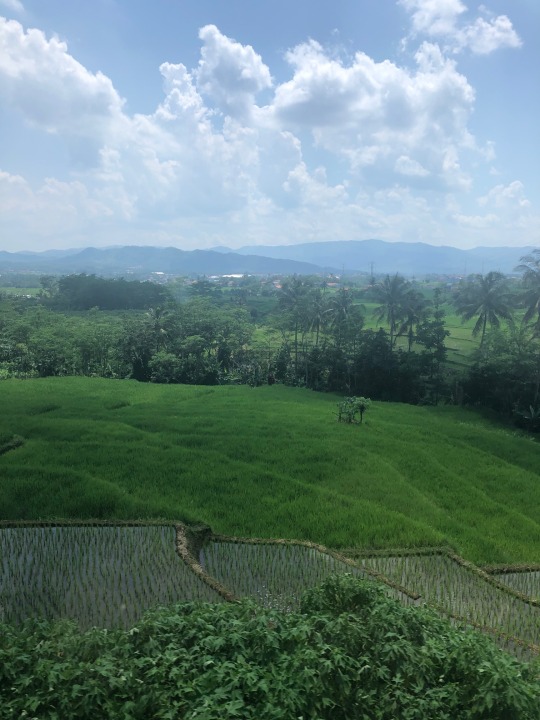
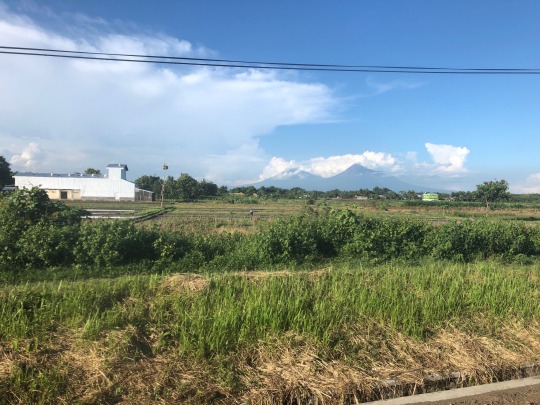
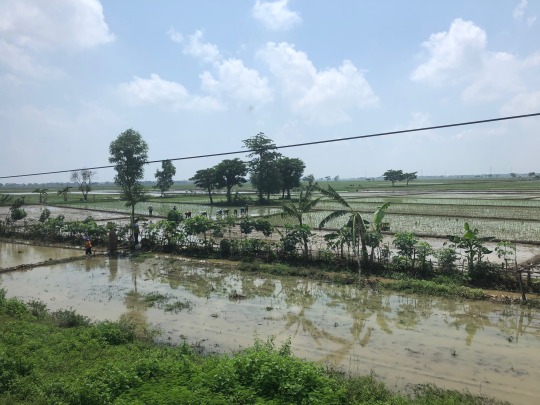

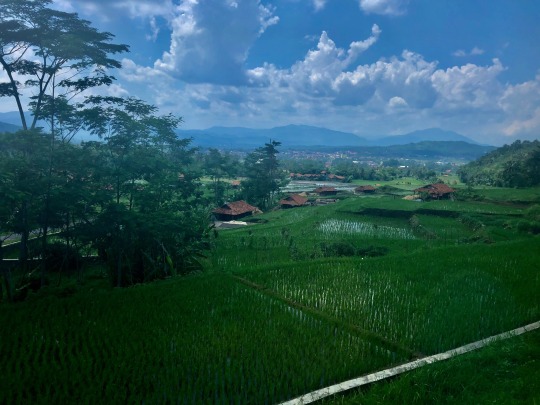
Train from Jakarta to Yogyakarta [IAN:] On Friday morning, January 17, we took a train from Jakarta to Yogyakarta, a journey of about 550km. The train itself was relatively modern, similar to a slow-moving Japanese bullet train. The seats were spaced far apart in the executive cabin, and they reclined more than an airplane’s seats. Gambir Station in Jakarta reminded me of a station in suburban Tokyo — a few stalls and shops around a modest lobby, then four platforms on the upper levels.Much of the countryside of Java is extremely flat, and densely cultivated with rice fields. It appears that only a small portion of agriculture is devoted to anything other than rice. I was hoping all along to see water buffalo, although I only saw them twice, in the second half of the trip. Despite the absence of draft animals, there were very few farming machines. I estimate about one powered tilling (?) or plowing machine for every 20-30 people hunched over working the fields by hand. Both men and women worked in the fields.Occasionally, the train passed by towns, some small and some large. Near the larger towns, incongruously massive warehouses and silos rose above the fields. I saw two metal structures in the distance that must have been 10 stories high. Most of the houses were one or two stories, constructed of cement or bricks and cinder blocks with tile roofs. There were also plenty of shanties made from pieces of corrugated metal. In all the settled areas, from the outskirts of Jakarta to the rural towns, piles of garbage appeared here and there. The garbage was simply strewn about in patches of at least 100 square meters. Near Jakarta it was common to see fires smoldering in the trash. Every river and creek was a deep, muddy brown, and the ones near a settlement were littered with plastic.In a few areas, small, pale yellow butterflies flew about by the dozens. I would often see birds that I didn’t recognize, in addition to plenty of chickens, ducks, and geese kept as domesticated animals.The train journey was nearly 9 hours full of beautiful or interesting sights. My favorite views were the hills and valleys of the middle part of the trip, where the track followed the curving hills up and over the spine of the island. The hillside would suddenly drop away beneath the tracks, revealing terraced paddies and tumbling streams. At times, the view would extend down a long slope to some settlement in the middle distance, a few kilometers away but clear enough. Toward the end of the long day on the train, we could see two huge volcanoes (Mt Sumbing and Mt Sundoro, I think) looming in dark blue on the horizon.
3 notes
·
View notes